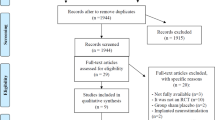Abstract
Introduction and hypothesis
Few randomized controlled trials have compared electrical stimulation treatment with drug therapy. Our hypothesis was that electrical stimulation treatment in women with urgency/urge incontinence would be more efficient compared to drug treatment.
Methods
Women ≥18 years of age with urgency/urge incontinence were randomized to receive either ten electrical stimulation treatments vaginally and transanally over a period of 5–7 weeks or tolterodine 4 mg orally once daily.
Results
Sixty-one women completed the study. There was no significant difference between the two treatment groups in micturition rate from baseline to 6 months, mean difference, −0.40 (95% confidence interval (CI), −1.61 to 0.82), but a clearly significant difference within each group for electrical stimulation, −2.8 (95% CI, −3.7 to −1.9), and for tolterodine, −3.2 (95% CI, −4.1 to −2.4).
Conclusions
Both treatments reduced the number of micturitions, but electrical stimulation was not found to be superior to tolterodine.



Similar content being viewed by others
References
Abrams P, Cardozo L, Fall M, Griffiths D, Rosier P, Ulmsten U, van Kerrebroeck P et al (2002) The standardisation of terminology of lower urinary tract function: report from Standardisation Sub-committee of the International Continence Society. Neurourol Urodyn 21:167–178
Norton P, Brubaker L (2006) Urinary incontinence in women. Lancet 7 367(9504):57–67
Hunskaar S, Arnold EP, Burgio K, Diokno AC, Herzog AR, Mallett VT (2000) Epidemiology and natural history of urinary incontinence. Int Urogynecol J Pelvic Floor Dysfunct 11(5):301–319
Chapple CR, Khullar V, Gabriel Z, Muston D, Bitoun CE, Weinstein D (2008) The effects of antimuscarinic treatments in overactive bladder: an update of a systematic review and meta-analysis. Eur Urol 54(3):543–562
Davila GW, Neimark M (2002) The overactive bladder: prevalence and effects on quality of life. Clin Obstet Gynecol 45(1):173–181
Berghmans LC, Hendriks HJ, De Bie RA, van Waalwijk van Doorn ES, Bø K et al (2000) Conservative treatment of urge urinary incontinence in women: a systematic review of randomized clinical trials. BJU Int 85(3):254–263
Holroyd-Leduc JM, Straus SE (2004) Management of urinary incontinence in women: scientific review. JAMA 25 291(8):986–995
Crandall C (2001) Tolterodine: a clinical review. J Womens Health Gend Based Med 10(8):735–743
Nabi G, Cody JD, Ellis G, Herbison P, Hay-Smith J (2006) Anticholinergic drugs versus placebo for overactive bladder syndrome in adults. Cochrane Database Syst Rev 18(4):3781
Van Kerrebroeck PEVA, Amarenco G, Thuroff et al (1998) Dose-ranging study of tolterodine in patients with detrusor hyperreflexia. Neurourol Urodyn 17:499–512
Renzhog L, Stanton S, Cardozo L, Nelson E, Fall M, Abrams P (1998) Efficacy and safety of tolterodine in patients with detrusor instability: a dose-ranging study. Br J Urol 81:42–48
Eriksen B, Bergmann S, Mjolnerod O (1987) Effect of anal electrostimulation with Incontan device in women with urinary incontinence. Br J Obstet Gynecol 94:147–156
Nakamura M, Sakurai T, Sugao H, Sonoda T (1987) Maximum electrical stimulation for urge incontinence. Urol Int 42(285):287
Ohlsson B, Fall M, Frankenberg-Sommar S (1989) Effects of external and direct pudendal nerve maximal electrical stimulation in the treatment of the unhibited overactive bladder. Br J Urol 64:374–380
Geirsson G, Fall M (1997) Maximal functional electric stimulation in routine practice. Neurourol Urodyn 16:559–565
Primus G, Kramer G (1996) Maximal external electrical stimulation for treatment of neurogenic or non neurogenic urgency and/or urge incontinence. Neurourol Urodyn 15:187–194
Leach G, Bavendam T (1989) Prospective evaluation of the Incontan transrectal stimulator in women wirth urinary incontinence. Neurourol Urodyn 8:231–235
Amaro JL, Oliveira Gameiro MO, Padovani CR (2003) Treatment of urinary stress incontinence by intravaginal electrical stimulation and pelvic floor physiotherapy. Int Urogynecol J Pelvic Floor Dysfunct 14(3):204–208
Caputo R, Benson J, McClellan E (1993) Intravaginal maximal electrical stimulation in the treatment of urinary incontinence. J Rep Med 38(9):667–671
Fossberg E, Sorensen S, Ruutu M et al (1990) Maximal electrical stimulation in the treatment of unstable detrusor and urge incontinence. Eur Urol 18:120–123
Indrekvam S, Sandvik H, Hunskaar S (2001) A Norwegian national cohort of 3198 women treated with home-managed electrical stimulation for urinary incontinence—effectiveness and treatment results. Scand J Urol Nephrol 35(1):32–39
Kelleher CJ, Cardozo LD, Khullar V, Salvatore S (1997) A new questionnaire to assess quality of life of urinary incontinent women. Br J Obstet Gynecol 104(12):1374–1379
Reese PR, Pleil AM, Okano GJ, Kelleher CJ (2003) Multinational study of reliability and validity of the King's Health Questionnaire in patients with overactive bladder. Qual Life Res 12(4):427–442
Kelleher CJ, Pleil AM, Reese PR, Burgess SM, Brodish PH (2004) How much is enough and who says so? BJOG 111(6):605–612
Tincello DG, Kenyon S, Slack M, Toozs-Hobson P, Mayne C, Jones D et al (2009) Colposuspension or TVT with anterior repair for urinary incontinence and prolapse: result of and lessons from a pilot randomized patient-preference study (Carpet 1). BJOG 116:1809–1914
Freeman RM (2005) How urgent is urgency? A review of current methods of assessment. Int Urogynecol J Pelvic Floor Dysfunct 16(2):93–95
Brubaker L, Benson JT, Bent A, Clark A, Shott S (1997) Transvaginal electrical stimulation for female urinary incontinence. Am J Obstet Gynecol 177(3):536–540
Barroso JC, Ramos JG, Martins-Costa S, Sanches PR, Muller AF (2004) Transvaginal electrical stimulation in the treatment of urinary incontinence. BJU Int 93(3):319–323
Smith JJ 3rd (1996) Intravaginal stimulation randomized trial. J Urol 155(1):127–130
Arruda RM, Castro RA, Sousa GC, Sartori MG, Baracat EC, Girão MJ (2008) Prospective randomized comparison of oxybutynin, functional electrostimulation, and pelvic floor training for treatment of detrusor overactivity in women. Int Urogynecol J Pelvic Floor Dysfunct 19(8):1055–1061
Acknowledgments
We gratefully acknowledge the help of statistician Anna-Maria Kling at Örebro University Hospital for help with the statistical analysis and the help of specialized nurse (Urotherapist) Vibeke Jonsson for collecting part of the data.
Conflicts of interest
None.
Author information
Authors and Affiliations
Corresponding author
Rights and permissions
About this article
Cite this article
Franzén, K., Johansson, JE., Lauridsen, I. et al. Electrical stimulation compared with tolterodine for treatment of urge/urge incontinence amongst women—a randomized controlled trial. Int Urogynecol J 21, 1517–1524 (2010). https://doi.org/10.1007/s00192-010-1213-2
Received:
Accepted:
Published:
Issue Date:
DOI: https://doi.org/10.1007/s00192-010-1213-2




